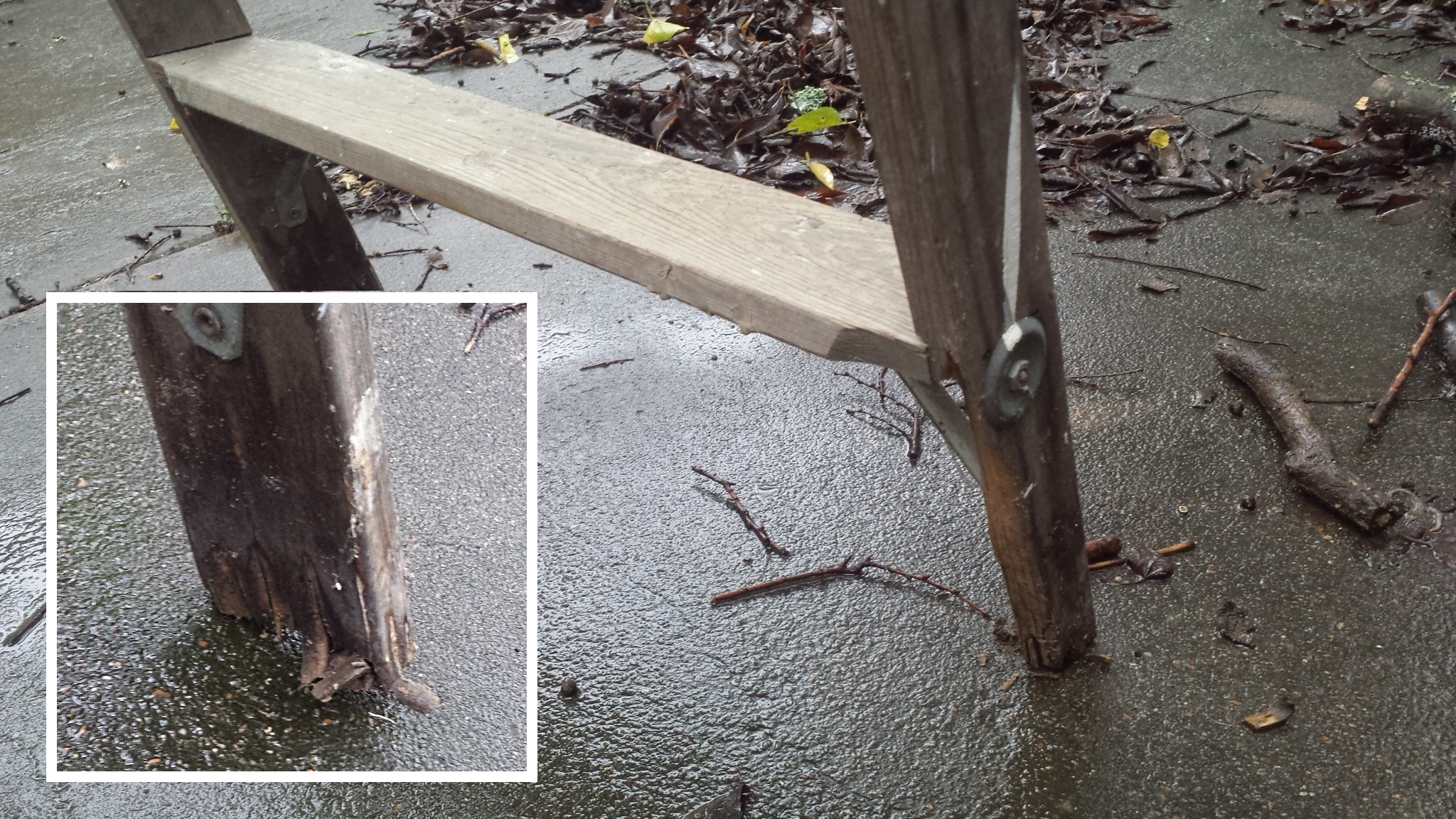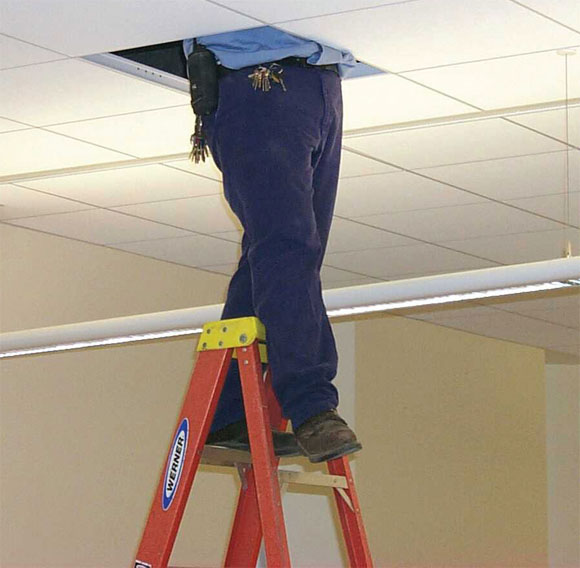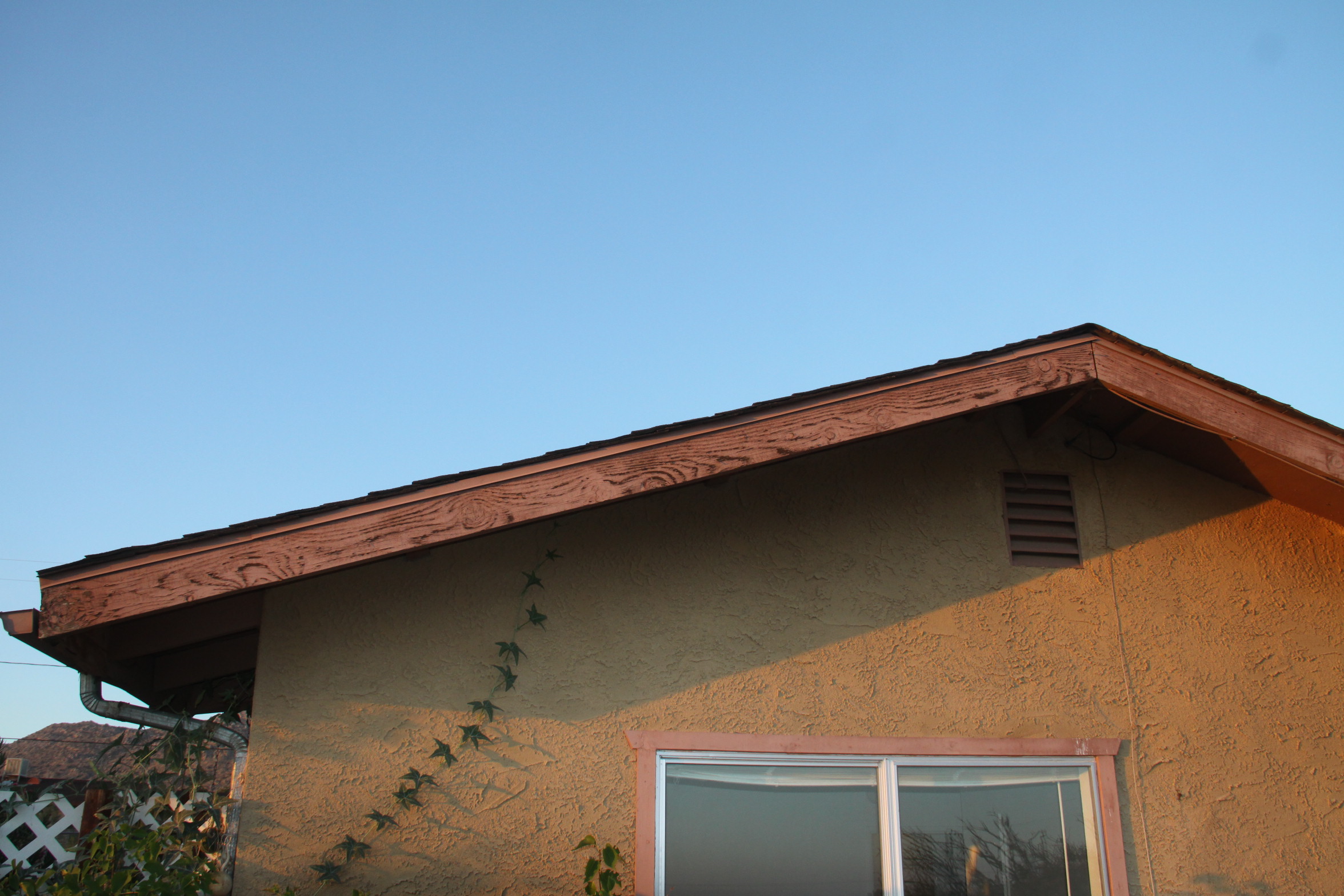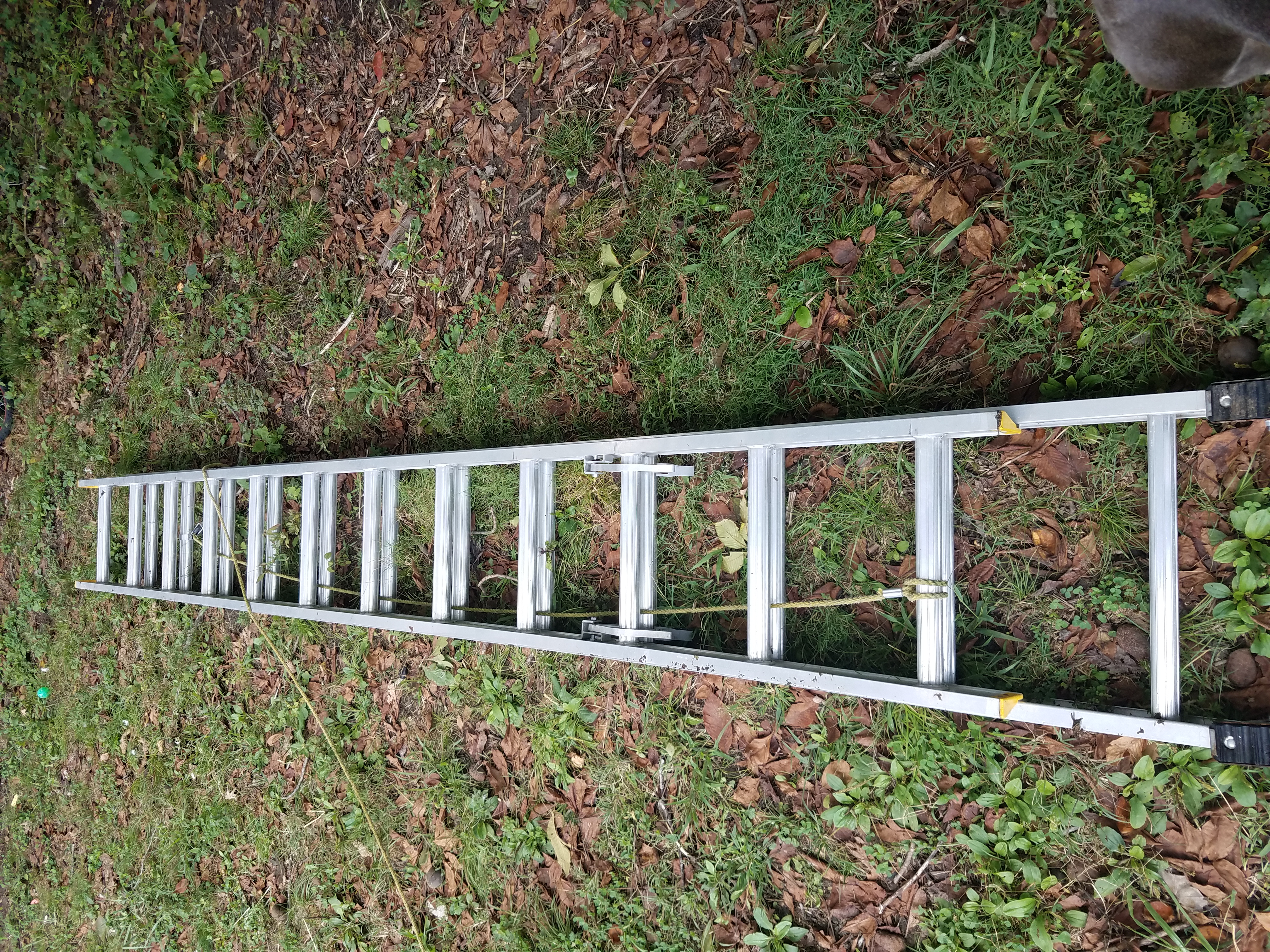i viewed a picture of a ladder that was improperly spaced from a bldg , the ladder was extended about 20 ft and the the ladder was almost adjacent to the bldg , maybe a foot or two with a second man attempting to foot the ladder with one foot as he was looking away
Here is an articulating ladder that can be used as a 6 foot step ladder or a 12 foot straight ladder. Since the ladder is 12 feet straight, the working height is 9 feet since the top of the ladder needs to extend 3 feet past the top of a roof, etc.
Having a fear of heights will slowly dwindle away with the more an individual is acclimated to it. Once the fear fades, the walking on the roof actually becomes safer since there is less tension in the body and the inspector can relax more. Once more relaxed, the sense of balance improves.
Thanks to the Ladder Safety Training Course I have a new appreciation for ladder safety. This lead me to inspect my own ladder, something I haven’t done in a while.
It wasn’t pretty. Something I’ve never noticed before is the condition of this ladder’s feet.
As shown in the picture, the foot on the right side of the shot, the left foot, is actually broken. Almost half of the foot is gone.
The right foot, shown in the inset image, is rotten. Actually, both feet are suffering from long term exposure to the wet concrete floor of my shed.
It had its day and served me well but all things must pass…
Now I know I can’t use this ladder until I replace it. 
Regarding: attic-access.jpg
Last year I built an addition onto my house and one of the things we added was an attic with a pull down ladder. The poor guy in this picture has to drag a step ladder into his hallway or closet and climb up most of the way, then jump. Coming down is worse, and forget about bringing stuff up or down.
I designed my access ladder with my wife in mind so she didn’t have to be like this guy.
Instead of a pull string hanging in your face, I made a pole with a transom window latch hook on the end. The hook opens the latch so you can lower the access panel.
What you see when the latch is open is a Werner Telescoping Attic Ladder. The same pole hooks into a loop so you can pull the ladder down. No reaching overhead to manhandle a heavy wooden folding ladder, no upper body strength required.
I hope someday an inspector appreciates how easily my attic is accessed.
My wife hasn’t been up there yet.
Ladders are built to carry and support only one person. In this photo we can see a couple of idiots sharing a ladder in a very unsafe manner which is an accident waiting to happen. Always think safety first on any job

using the proper ladder is very important as there are nine different types of ladders and you should never use the wrong type for a job. As a good example never lean a step ladder against a wall to climb to the roof
This gentleman is showing us the improper usage of the ladder He needed to get a taller ladder to stand on he is standing on the very top of the ladder and no extra support in case he did fall
some common causes of ladder injuries include but not limited to mounting and dismounting a ladder improperly failing to set the ladder up correctly misstepping on the ladder rungs bend out too far and reaching when on the ladder and climbing up too many rungs
This gentleman is living dangerously. Proper ladder use would require a straight or extension ladder extended 3’ above the gutter line for roof access. The ladder should then be tied off to the gutter to prevent it from falling. Use of a stepladder could result in the entire ladder falling over and him along with it.
This is a picture of the weight capacity on a step ladder. As it states, it has a capacity of 250 pounds. This weight should include the person and any tools or objects that they are carrying while climbing the steps.
According to the World Health Organization, the United Sates leads the world in ladder deaths. Each year there are more than 164,000 emergency room treated injuries and 300 deaths in the United States that are caused by falls from ladders.
It is important to check your ladder before every use and have it inspected twice a year. In this particular ladder the frame is bent, if the ladder was not inspected prior to use it could have failed and create unsafe conditions.
I learned that ladders have accessories that can aid in providing safer conditions while in use. A ladder stabilizer allows the top of the ladder to be stable against the stable or top of the structure. Always stay 10 feet away from all power lines and electrical components.
When setting an extension up it can be used to climb up to a roof area of a gable roof on either rake or eave side ensuring ladder is on stable and level ground and extends minimum of three feet above the contact point of the roof.
Re-taking this course after two thins happened. First was hearing a long time contractor fell from a ladder when attempting to climb to roof, injury could of been life threatening. Myself I could only think maybe doing what out job requires I did feel complacent where I should not, so taking ladder safety again reminded myself of things forgotten. A great lesson for me.
Ladder Safety
by Nick Gromicko and Kenton Shepard
In keeping with the theme, this article continues to explain the many types of ladders in use and the overall risk. Gromicko and Shepard, have included the use of technology vs a ladder; this is valuable information to new inspectors, as this could make the difference in a home inspection with an unsafe roof condition at the time of inspection. Inspectors should be safety minded, especially so when working alone.
This photograph contains an image of a 24’ aluminum extension ladder. To operate the ladder, place against the building and stand it up, using the rope an pulley system to extend the ladder to the desired height. The total working length of this ladder is 21’.
When stapling nonmetallic sheathed cable, cables must lay flat. It is a violation of code to put multiple cables through one staple. It is also not allowed to install cables with the edge side facing the anchoring location. Incorrect installation allows pinched cables, cut wires, or other dangerous conditions to develop.
Article- Steel Homes.
Steel has a number of advantages over its timber counterpart. It is readily available, easily recycled, and stronger. Steel has long been used for commercial construction but is gaining more traction in residential construction as timber prices have risen. Steel can be used in foundations, walls, and roof construction.







